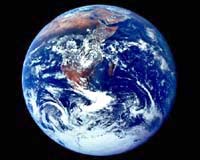
 |
Charley made landfall at 0415 GMT some 50 kilometers (31 miles) south of Havana, and was expected to take two hours to cross over the Cuban capital and head out to sea again on its way to the US state of Florida.
Two million Havana residents braced for the storm with a military discipline born of fending off some 50 storms in 80 years. However, Havana's decrepit buildings have not withstood a hurricane since Kate in 1985.
Cuban President Fidel Castro, on his 78th birthday, visited the Meteorology Institute late Thursday to follow the trajectory of the hurricane, the edges of which has pelted the area with rain since midday Thursday.
Civil defense storm drills and preparation have been largely responsible for keeping Cuba's storm-related death tolls low relative to other Caribbean countries. Just 18 have died in eight hurricanes since 1985.
Authorities on Thursday set up shelters with food and doctors, and shut off electricity as a precaution, local reports said.
Cubans stockpiled drinking water, candles, food and batteries. They took down television antennas, secured windows and roofs.
Livestock herds were taken uphill, fishermen were called to port and crops were collected while other agricultural work was suspended.
By late Thursday, Hurricane Charley bypassed Jamaica but came close to the Cayman Islands, the small British colony, forcing the closure of its main airport. Tourists helped sandbag shore defenses against huge waves, local media said.
TERRA.WIRE |